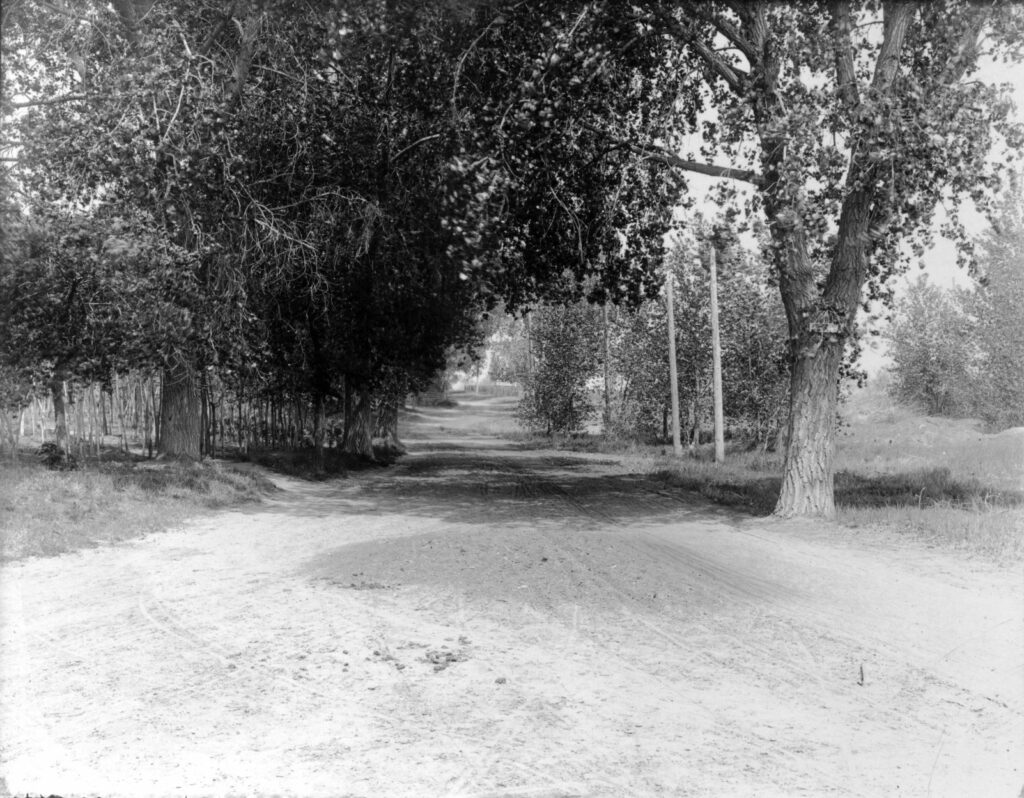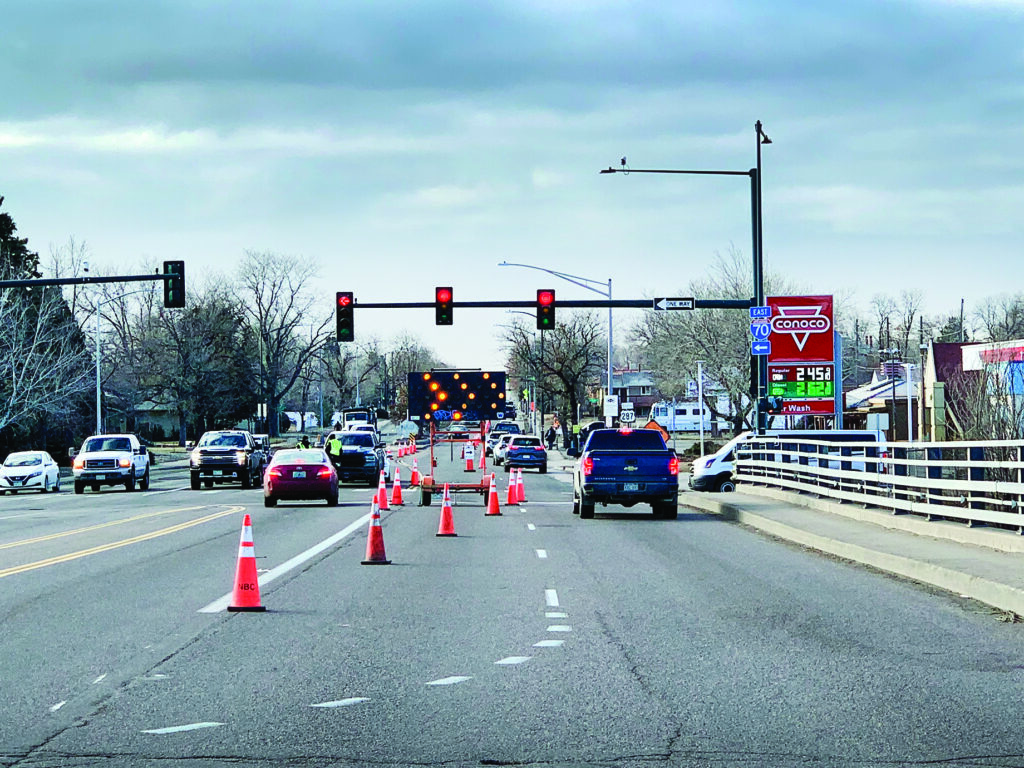
Federal Boulevard cuts right through the heart of North Denver. What started as a dirt road known as Highland Avenue and later Boulevard F, now moves 30,000-40,000 vehicles per day and the Route 31 RTD bus on the street has the fourth highest ridership in the system. 26% of Denver’s population lives in the neighborhoods surrounding the street.
Bus Rapid Transit
As Denver and the surrounding cities continue to grow, there is tremendous pressure to move more and more people along the corridor. The Denver Department of Transportation and Infrastructure (DOTI) is looking to transport people more efficiently. Spokesperson Heather Burke said that “DOTI conducted a transit alternatives analysis for the corridor and looked at various options including: light rail, BRT, streetcar, and more.”
Bus Rapid Transit, or BRT, was chosen as the preferred option and will dedicate a lane of Federal to buses. BRT will increase the capacity to move up to 50,000 people per day on buses alone, according to DOTI. The agency collected feedback from surrounding neighborhoods showing that people want improved transit times, better pedestrian and bike connections, and enhanced safety along the street. Burke indicated improvements could also “include adding transit signal priority as well as installing bus bulb-outs, which allow buses to stop and board passengers without leaving the travel lane.” Due to right of way constraints and ridership numbers, DOTI is only recommending that BRT go from South Denver to 20th Avenue and said they will look for opportunities for dedicated transit lanes and improvements north of 20th Ave with community input.
Jill Locantore, Executive Director of the nonprofit Denver Streets Partnership, applauded the city for looking at BRT given it is a much more efficient way to move people. She points to Seattle as an example of a city that has invested in a high frequency bus transit network as an example of the success of this strategy. Locantore asserted that even though 100% of people won’t use buses, enough did in Seattle that it made a difference. “Their population has grown as fast as Denver’s during the last 15-20 years. But the number of cars on the streets has gone down during that time period. People there have a practical alternative to driving, and when it’s available, people use it.”

Safety Improvements
For all of Federal’s ability to move large numbers of people, it is also one of the deadliest streets in Denver. A recent study showed Federal has a fatality rate that is 20 times higher than the average urban street in Colorado. In North Denver, there have been 6 fatal crashes in the last 6 years on Federal; all pedestrians killed, all at night. Locantore, says that the number of serious injuries and fatalities on the corridor are tragic but not surprising given the road was “designed as a highway to move as many cars as fast as possible”. Residents nearby include “a lot of low income people that depend on transit. A lot of the businesses and services they are trying to access are on Federal Boulevard. So it’s an inherently deadly combination of this highway style street with land uses that are woefully incompatible.” Locantore said that the number of pedestrian fatalities is exacerbated by the limited number of crosswalks. It means people often have to walk a half mile out of the way to get to a crosswalk, which is “antithetical to human nature when their destination is right across the street”. Locantore recommended that the speed limit be lowered, additional mid-block crossings with pedestrian refuges be installed, and low cost traffic calming measures be implemented to lower the number of injuries on the road.
The Colorado Department of Transportation (CDOT), who controls speed limits on the road, does not have lowering speed limits in play for the near term. CDOT Spokesperson Tamara Rollison said “CDOT is participating in the “Denver Speed Limit Reduction Feasibility Study” and while the initial phase does not include state highways like Federal, “CDOT hopes to take lessons learned from this effort for possible application on metro area state highways.” CDOT has awarded two “Safer Main Streets” grants to make safety improvements on the corridor and is “piloting motion activated solar lights at three locations along Federal Boulevard to make pedestrians more easily visible to drivers.”
One of those CDOT grants awarded to DOTI will fund pedestrian improvements, and is in the early planning stages for Federal between 23rd Ave and 27th Ave. Burke says they include ”rebuilding the traffic signals at 25th and 26th Avenues with pedestrian WALK signals, adding bulb-outs to shorten the crossing distance for people on foot, better street lighting to enhance the pedestrian experience and other placemaking elements.”
According to Burke, DOTI also has numerous projects to enhance safety on the corridor for people who drive, walk, bike, roll, and take transit. This summer they will be “adding ‘quick build’ safety treatments at the intersections of 20th, 50th, 51st and 52nd Avenues to include a mix of bollards, curb extensions, and new safety signage to draw drivers’ attention to pedestrians crossing.”
New Technology and Developments
The traffic signals at Federal and 38th Ave will also be rebuilt in spring of 2022 with improved LED lights and pedestrian signals. By this summer DOTI will also be “adding bike detection cameras at the intersections of 50th, 35th, and 29th Avenues. The technology is designed to detect the presence of a bike, without people on bikes having to dismount to push the pedestrian button.” Time will tell whether these improvements by DOTI will be enough to achieve “Vision Zero”, or Denver’s goal of zero traffic deaths by the year 2030.
DOTI also received a grant a few years ago to develop and test smart transportation technology on Federal. New onboard transmitters on vehicles like snow plows and RTD buses will communicate with roadside units on traffic signals and give these vehicles priority at traffic lights. They hope to test the new technology in the not too distant future.
In addition, DOTI and other city agencies, in conjunction with the West Colfax Business Improvement District, are studying a potential redevelopment and redesign of the 29 acre Federal Blvd. and W. Colfax cloverleaf interchange. Potential redesign options include an opportunity for new housing and retail, new green spaces, and better connectivity for people walking, biking, and taking transit.
Updates and opportunities to engage in feedback on all these projects can be found at https://denvergov.org/doti.
Denver Water Project
Starting in January, Denver Water began work on replacing 10,000 ft of water main lines on Federal Blvd, most of which date back to 1912. Crews will work on two different segments working their way south to north between W. 16th Avenue and W. 29th Ave, and simultaneously between W. 46th Ave and W. 52nd Ave. Construction will continue through this spring and summer from 7am-7pm and they will work to keep access open for residents and local businesses. Denver Water spokesperson Jose Salas also said that “as we have done for many years, Denver Water will replace any customer-owned lead services lines we encounter along the way, at no direct cost to the customer. We estimate we will replace 180 customer-owned lead service lines during this project.” Residents can sign up for updates on this project at: https://www.denverwater.org/project-updates/pipe-replacement/federal-boulevard-pipe-replacement.

Be the first to comment